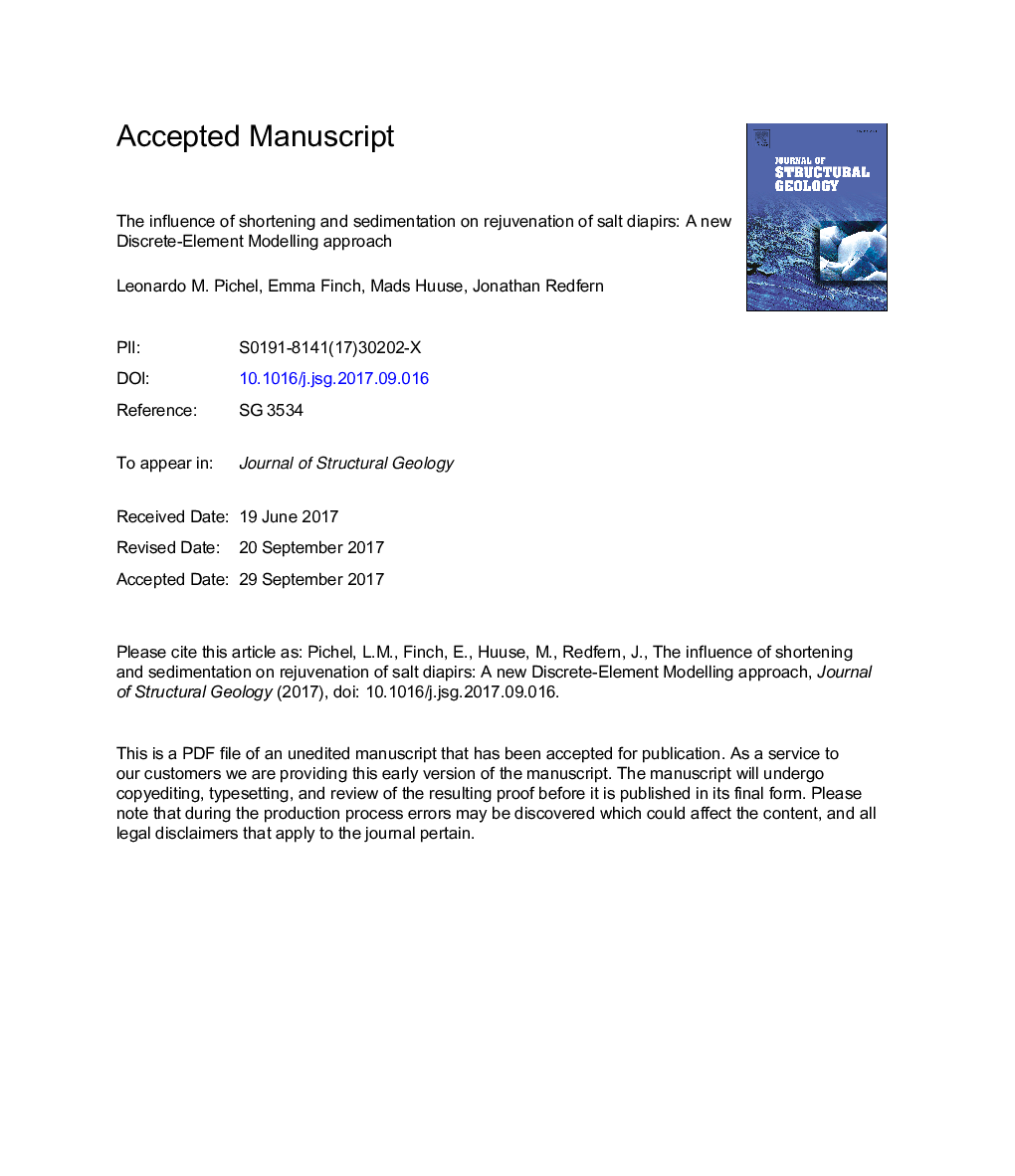| Article ID | Journal | Published Year | Pages | File Type |
|---|---|---|---|---|
| 5786235 | Journal of Structural Geology | 2017 | 68 Pages |
Abstract
This study employs a novel Discrete-Element Modelling approach to investigate the interplay of sedimentation with rejuvenation of diapirs by shortening. The inherent complexity of salt tectonics, the complications encountered when imaging structures beneath salt, and the lack of outcrop analogues, coupled with its importance to petroleum systems, make salt tectonics one of the most interesting and debated topics in basin studies. Model results successfully reproduce the geometric and dynamic behaviour of active diapirism and show the effects of sedimentation thickness, rate and timing on the generation of distinct diapir geometries, including i) salt tongues and ii) squeezed upright diapirs. Models with late sedimentation or a lower sedimentation rate relative to salt mobility show development of asymmetric diapirs with allochthonous salt tongues; whereas models with earlier sedimentation or a faster sedimentation rate generate upright squeezed diapirs. Early sedimentation at a moderate rate results in a symmetrical hour-glass shaped structure, resembling a tear-drop diapir. Results are fully reproducible and comparable with many natural examples, and include overburden deformation which is difficult to simulate using other numerical techniques. Extending this approach to different problems and basinal contexts could improve our understanding of deformation mechanisms and sediment distribution around salt structures.
Related Topics
Physical Sciences and Engineering
Earth and Planetary Sciences
Geology
Authors
Leonardo M. Pichel, Emma Finch, Mads Huuse, Jonathan Redfern,
